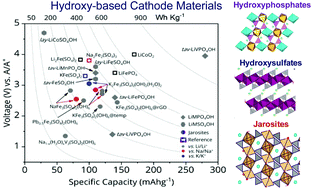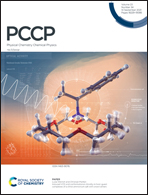An overview of hydroxy-based polyanionic cathode insertion materials for metal-ion batteries
Abstract
Rechargeable batteries based on Li-ion and post Li-ion chemistry have come a long way since their inception in the early 1980s. The last four decades have witnessed steady development and discovery of myriads of cathode materials taking into account their processing, economy, and performance along with ecological sustainability. Though oxides rule the battery sector with their high energy and power density, polyanionic insertion compounds work as gold mines for designing insertion compounds with rich structural diversity leading to tuneable redox potential coupled with high structural/chemical/thermal stability. The scope of polyanionic compounds can be taken a step further by combining two or more different types of polyanions to get suites of mixed polyanionic materials. While most cathodes are built with metal polyhedra constituted by oxygen (MOm|XOm, M = 3d metals, X = P, S, Si, B, W, etc., m = 3–6), in some cases, selected oxygen sites can form bonding with hydrogen to form OH/H2O ligands. It can lead to the family of hydroxy-based mixed-polyanionic cathode materials. The presence of hydroxy components can affect the crystal structure, local chemical bonding, and electronic, magnetic, diffusivity and electrochemical properties. Employing a mineralogical survey, the current review renders a sneak peek on various hydroxy-based polyanionic cathode materials for Li-ion and post Li-ion batteries. Their crystal structure, and electrochemical properties have been overviewed to outline future research focus and scope for real-life application.

- This article is part of the themed collection: PCCP Perspectives


 Please wait while we load your content...
Please wait while we load your content...